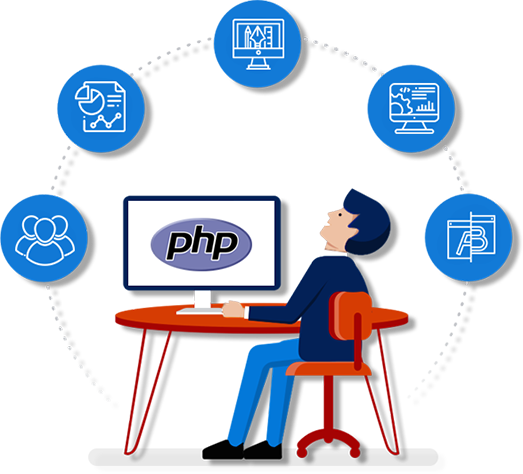Pulse of Information
Stay updated with the latest news and insights.
PHP Development: Where Code Meets Creativity
Unleash your creativity with PHP development! Discover tips, tricks, and innovative solutions to elevate your coding game.
Understanding PHP: The Language Behind Dynamic Websites
PHP, which stands for 'Hypertext Preprocessor', is a powerful server-side scripting language designed primarily for web development. Its flexibility and ease of use make it a popular choice for creating dynamic websites. Unlike static HTML, PHP allows developers to interact with databases, generate dynamic content, and manage sessions, making it an essential tool for modern web applications. As a result, understanding PHP is crucial for anyone looking to enhance their web development skills or create robust online platforms.
One key feature of PHP is its ability to integrate seamlessly with various types of databases, such as MySQL. This integration enables developers to create applications where data can be stored, retrieved, and manipulated efficiently. Moreover, PHP's extensive library of built-in functions simplifies many tasks, from form handling to sending emails. To get started with PHP, developers should familiarize themselves with its syntax and fundamental concepts, such as variables, loops, and conditional statements. Mastering these essentials will pave the way for building feature-rich dynamic websites that cater to user needs.

10 Creative PHP Projects to Enhance Your Development Skills
Exploring PHP through hands-on projects is one of the most effective ways to enhance your development skills. Here are 10 creative PHP projects that can help you sharpen your abilities while allowing you to express your coding creativity:
- Personal Blog: Create your own blog platform with user authentication, post submissions, and comment systems.
- E-commerce Website: Build a fully functional online store with features like product listings, a shopping cart, and payment gateways.
- Task Management System: Develop a web application to help users manage their tasks, with options for categorization and deadlines.
- Online Quiz: Create an interactive quiz application that allows users to answer questions and receive scores.
- Portfolio Website: Showcase your work by developing a personal portfolio site that emphasizes your skills and projects.
- Social Media Dashboard: Build a dashboard that aggregates social media feeds and allows users to post updates from one location.
- Weather App: Fetch weather data from an API and display current conditions and forecasts for different locations.
- Recipe Finder: Develop an application that searches for recipes based on ingredients users input.
- Event Calendar: Create a system where users can add and view events, providing reminders and notifications.
- Online Chat Application: Build a chat platform where users can communicate in real time.
How PHP Powers the Web: From Basics to Advanced Techniques
PHP, or Hypertext Preprocessor, is a widely-used open-source server-side scripting language that plays a crucial role in web development. From building simple static websites to complex dynamic applications, PHP provides developers with the tools to create interactive experiences. Its flexibility and ease of integration with various databases, such as MySQL, make it a preferred choice for many web developers. Some basic features of PHP include:
- Dynamic Content Generation
- Database Interaction
- User Authentication
- File Uploading
As web applications grow in complexity, PHP also offers advanced techniques that enhance performance and security. Developers can leverage features like Object-Oriented Programming (OOP) to create modular and reusable code. Additionally, frameworks such as Laravel and Symfony provide robust structures that streamline the development process. Implementing best practices like code refactoring, using Composer for package management, and adhering to the MVC architecture can significantly boost the efficiency of PHP applications. As a result, PHP continues to be a powerful ally for developers looking to unlock the full potential of the web.